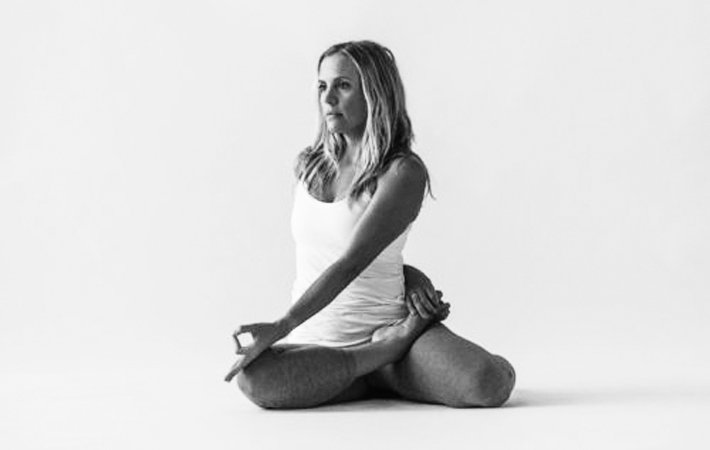Mind over matter for wellbeing

The holistic approach to sustainable wellbeing, by Debbie Cairns
Interview with Debbie Cairns Yoga Instructor, The Space Studio, Barangaroo
Just as an organisation will use innovative tools, processes and strategies to reach ambitious fiscal goals, indivduals must similarly consider employing a holistic and diverse methodology to achieve sustainable wellbeing and greater potential.
Debbie Cairns is a highly qualified yoga teacher with over 350+ hours of training in Vinyasa Flow, Hatha and Yin Yoga. Her unique approach is to weave creative, intuitive and sometimes challenging sequencing with elements of pranayama, meditation, relaxation and carefully chosen music to guide students inwards to a place where they feel revitalised, calm and deeply connected to themselves. She currently instructs Yoga at The Space Studio, Barangaroo.
What is the connection between physical and mental wellness?
Yogis believe that the mind and body are not separate entities but are fundamentally and inextricably linked. What we do, or don’t do to one has a direct effect on the other.
There is a wealth of research into the links between mental and physical wellbeing to corroborate this view. For example, a recent study found that 75% of Australians feel that stress is having a profound impact on their physical wellbeing. In other words, the mental stress they are experiencing day-to-day has a direct impact on how good they feel physically.
The World Health Organisation now recognises the important role mental health plays in how good or otherwise we feel by defining health as not merely the absence of disease in the body, but a state of complete physical, mental and social wellbeing.
Explain the concept of meditation. How does it work?
Meditation is a state of consciousness. It’s a way of being, not doing. When we are in the state of meditation the mind is calm, peaceful but aware of itself.
The practice of meditation is a way of training the mind to rest in thoughtless awareness. We give the mind a hook, something for it to return focus to again and again – the breath, a mantra or a visualisation for example. With repetition, anchoring the mind to a soft point of focus creates a gateway for stillness of the mind and the state of meditation to arise.
Explain the benefits of yoga.
The aim of yoga is to create harmony in body, mind and energy by linking breath with movement.
The physical benefits are well known. Yoga helps create strength and mobility in the body, improves posture and balance, lowers blood pressure, improves immune function, helps to balance hormones – producing more of the feel good hormones like serotonin, and less of the stress hormones like cortisol, and improve overall fitness and endurance.
However what keeps people coming back to yoga is how good they feel mentally after class. The emphasis on the breath helps us to begin to slow and calm the mind, providing a gateway into meditation. And the poses nourish our energy leaving us feeling refreshed and revitalised rather than depleted after class.
For the full story plus many others, visit us at Two or Three International Towers and pick up a hard copy of the second edition of our It. publication.

